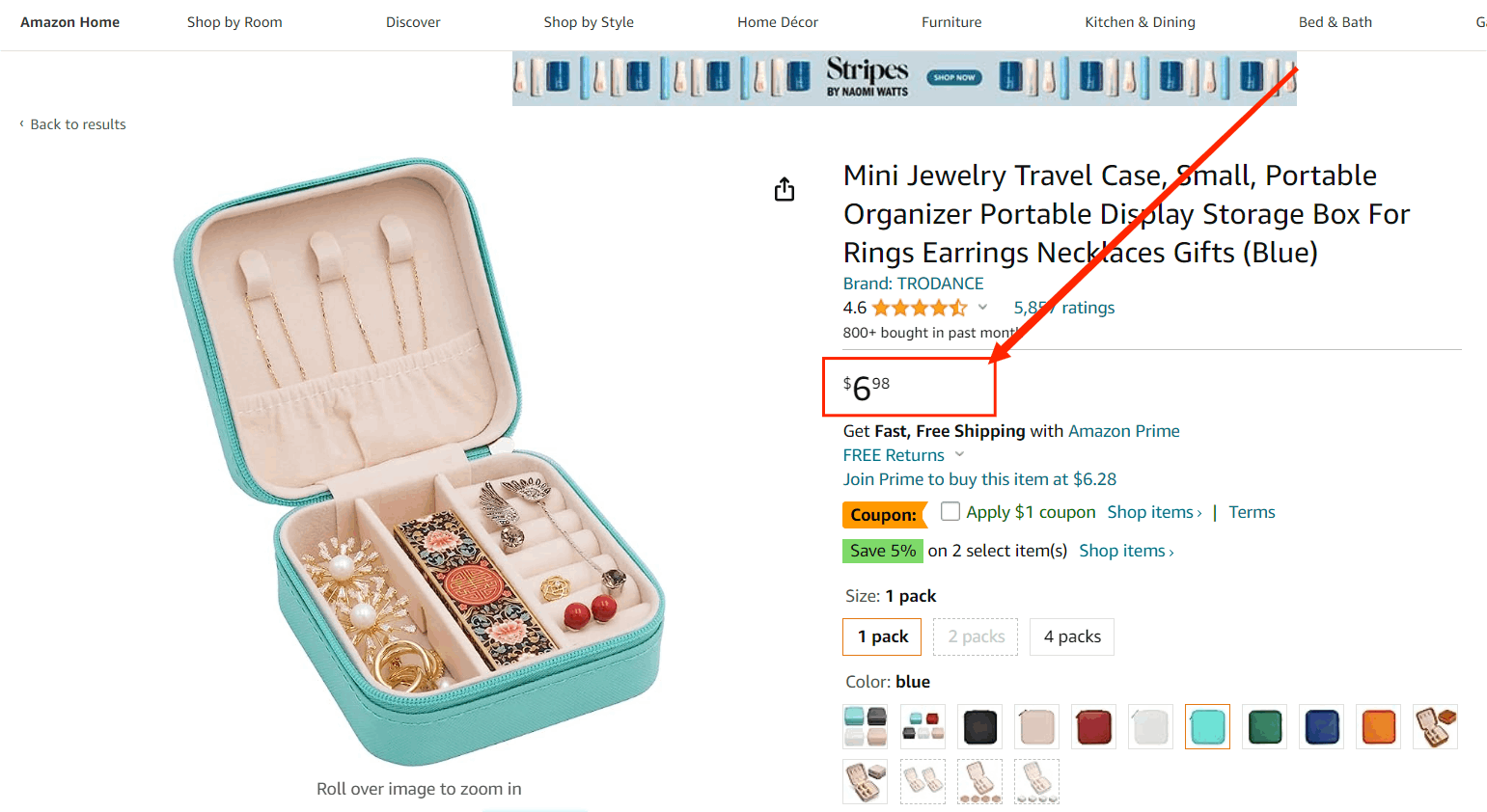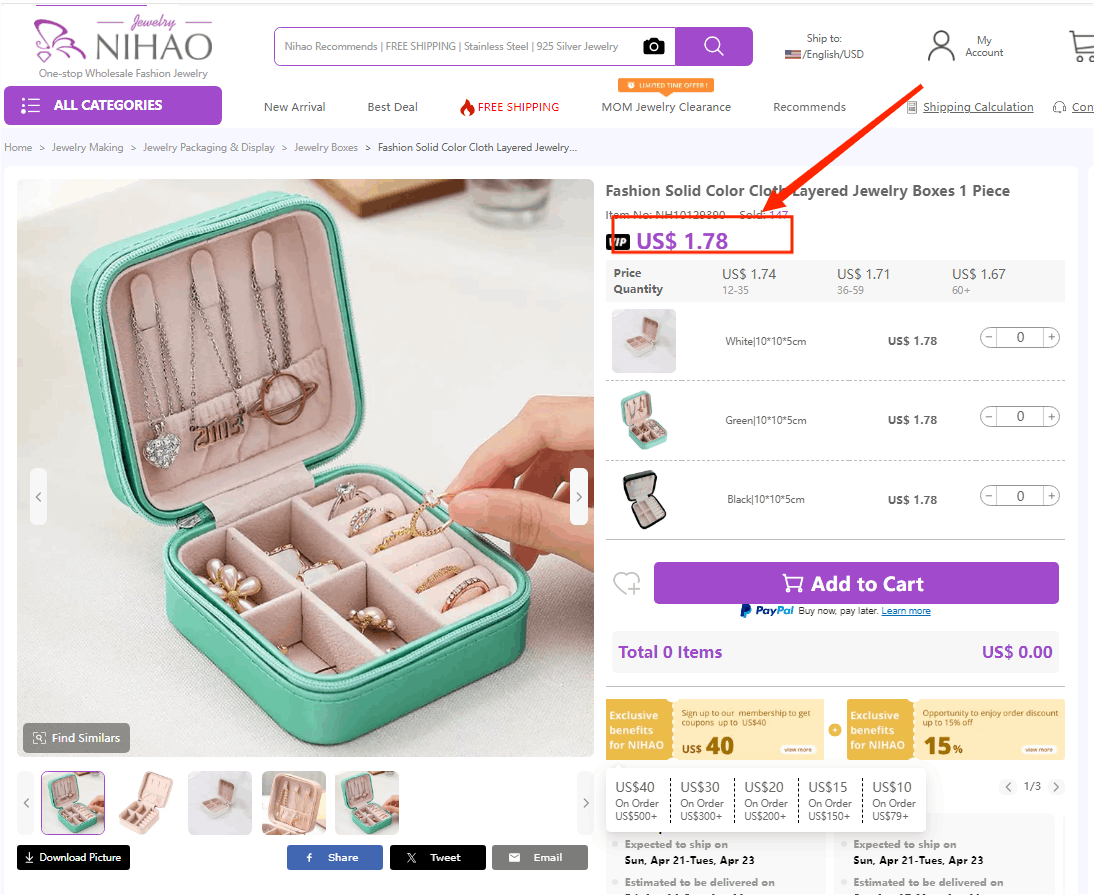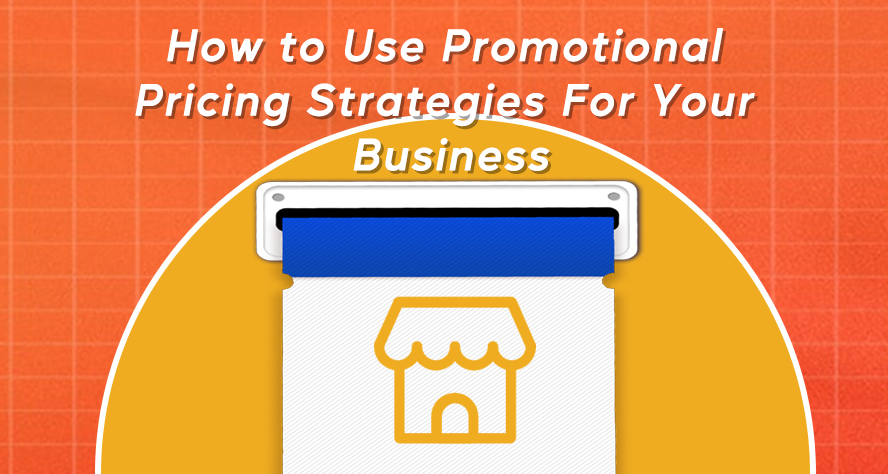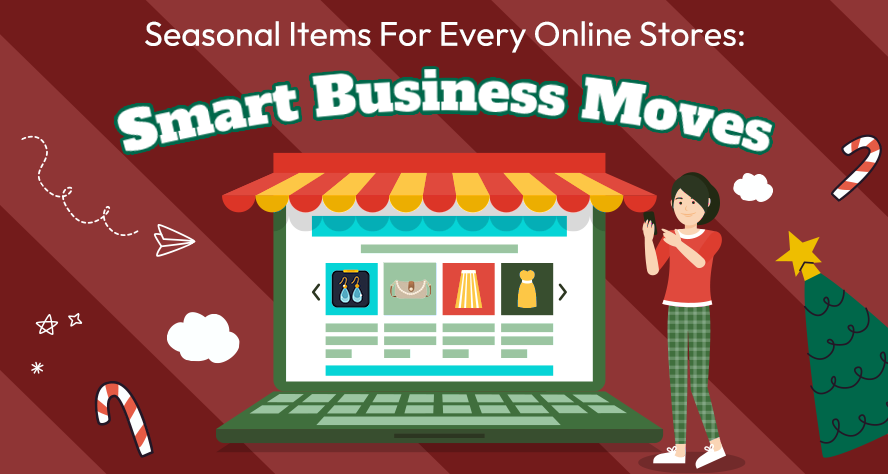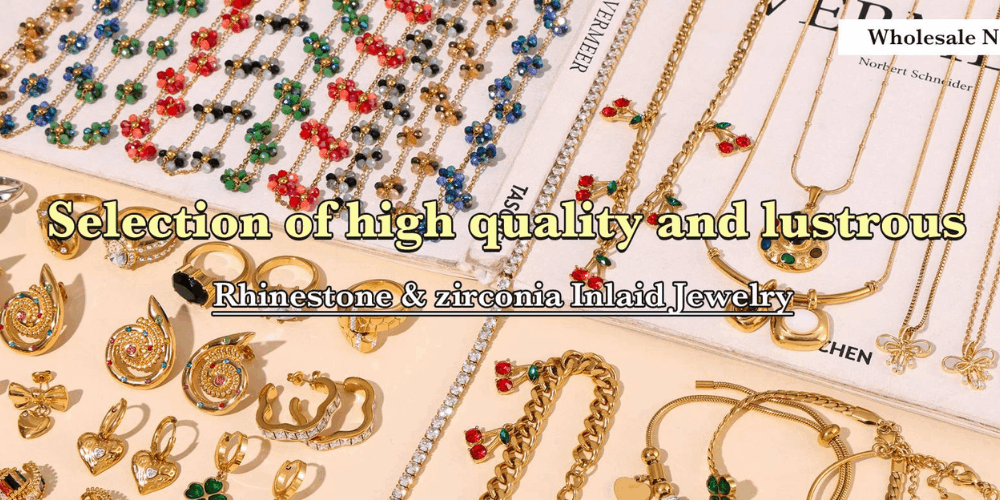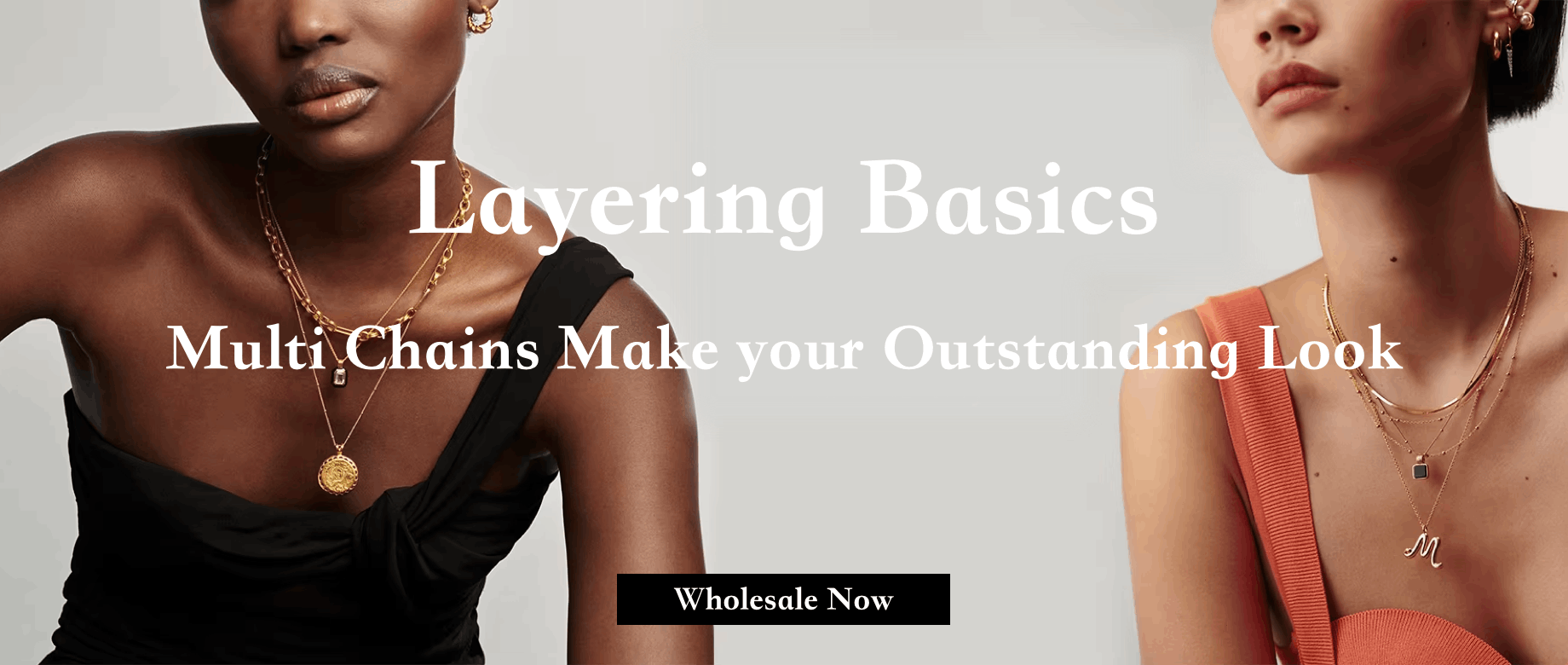Pricing jewelry is an art in retail, and to make your business sustainable, you need pricing strategies that generates enough profit while attracting customers.
Whether you’re an experienced jewelry retailer or a newbie, the right pricing strategy can make your business a success.
In this guide, we’ll outline some of the key elements of retailer pricing, as well as common pricing strategies for different demographics, to help you increase your profits.
The Importance of Jewelry Pricing
As a jewelry retailer, determining the right price for your products is almost as important as choosing the products themselves.
In a competitive marketplace, developing the perfect pricing strategy for your jewelry merchandise is critical to attracting customers, driving sales, and ensuring profitability.
11 Key Factors When Determining Your Pricing Strategies
While retailer jewelry pricing is a complex topic with many components, the key factors involved in the way products are priced can be broadly categorized into the following 11:
- Cost of goods: Get a clear picture of the cost of your jewelry. This includes not only wholesale costs but also transportation costs and other overheads such as marketing.
- Target market: Understand the needs, preferences, and purchasing power of your target customers.
- Competitors: Research competitors’ pricing strategies and get an idea of the price range of similar products in the market.
- Product Series: Consider factors such as the uniqueness and quality of the product range and brand awareness to determine whether prices can be increased.
- Elastic demand: Evaluate customer reaction to price changes regularly.
- Seasonal changes: For seasonal jewelry, customer demand fluctuates with the seasons. For example, summer jewelry sells very little during the rest of the year.
- Profit: Determine the profit you want to make on each item to cover your operating costs and achieve a good return.
- Psychological pricing: Prices that end in odd numbers are often perceived as more favorable.
- Pricing flexibility: Pricing is not a one-time decision and needs to be continually adjusted based on customer feedback, market fluctuations, and the performance of specific products.
- Evaluate pricing effectiveness: Monitor sales performance and customer behavior to regularly evaluate the effectiveness of your pricing strategy and continuously optimize your pricing solution to achieve the best results.
- Perceived value: Perceived value plays an important role in the pricing of jewelry.
15 Successful Pricing Strategies for Retailers
- Value-based pricing
- Cost-plus pricing
- Competitive Pricing
- Economy pricing
- Penetration Pricing
- Dynamic Pricing
- Skim Pricing
- Bundle pricing
- Psychological Pricing
- Loss-leader pricing
- Anchor Pricing
- Keystone Pricing
- Discount Pricing
- Premium Pricing
- Channel Based Pricing
Understanding the key elements of pricing strategies, let’s explore 15 common pricing strategies:
Value-based pricing
Value-based pricing is truly customer-centered pricing. It involves finding out what the customer is willing to pay (the WTP price), making sure it is higher than the cost, and setting the price somewhere in between.
For a piece of handmade jewelry, users are often willing to pay a higher price because of the story behind it, its craftsmanship and presentation, etc.
This method is usually done through surveys, which not only give an idea of the customer’s intention to buy but also allow them to make as much profit as possible without losing their willingness to buy.
Cost-plus pricing
This is the easiest way to determine the price of your product. It needs to be enough to cover operating costs and provide a reliable return on your investment.
For example, I’m the owner of a jewelry retailer and want to wholesale a recent breakout product from Nihaojewelry: Gold Plated Necklaces
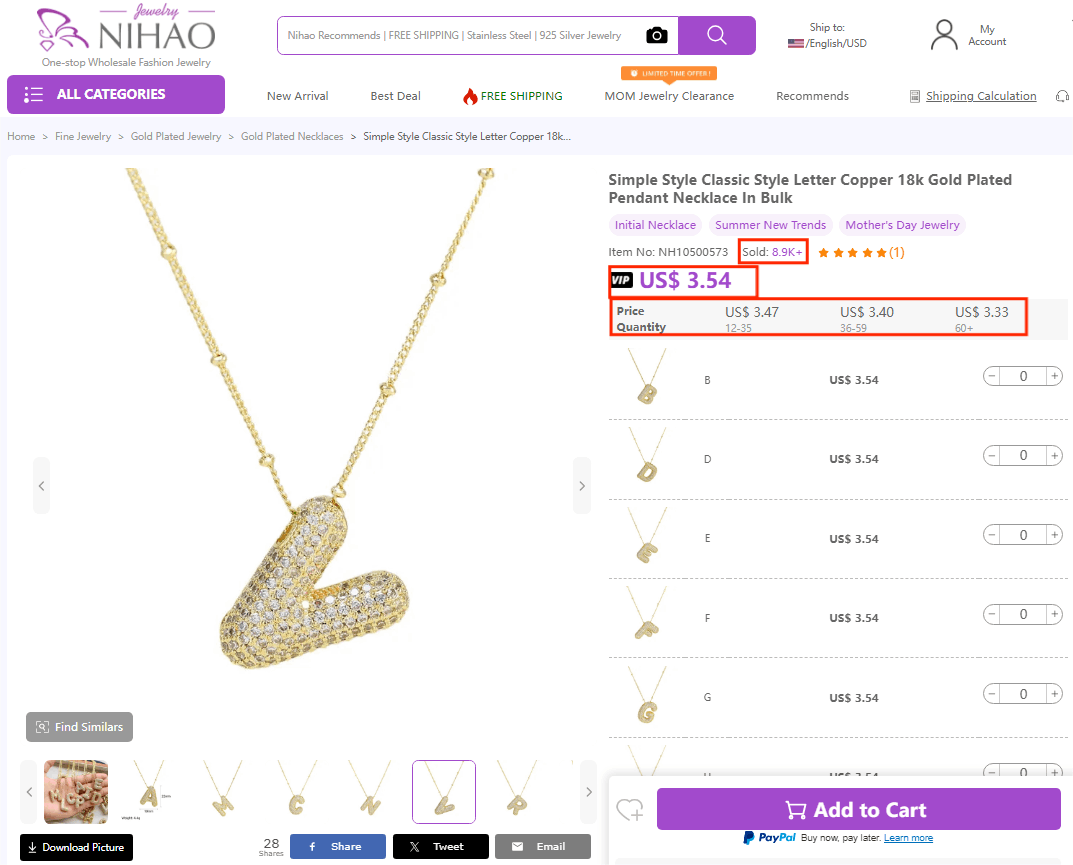
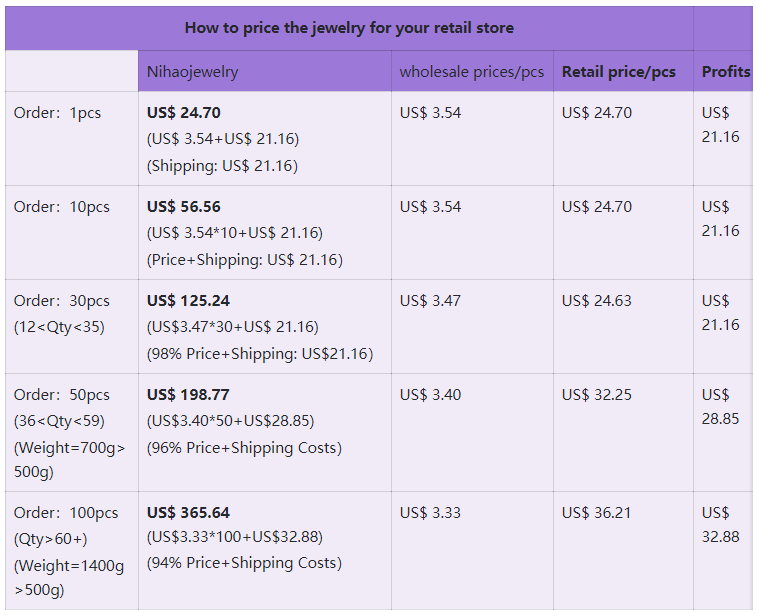
There is no extra charge for wholesale items from Nihaojewelry, we only need to pay the wholesale price of the item and the shipping cost.
Therefore, as a retailer, the retail price of jewelry can be directly used with the formula:
Price = wholesale price + shipping cost
As you can see from the table.
When we wholesale up to 12 pieces, the wholesale price is US$3.54, our retail price can be set at US$24.70, and we can make a profit of US$21.16;
When we wholesale 12<Qty<35, the wholesale price is US$3.47, our retail price can be set at US$24.63, and we can make a profit of US$21.16;
When we wholesale 36<Qty<59, the wholesale price is US$3.40, our retail price can be set at US$32.25, and we can make a profit of US$28.85;
When we wholesale 100 pieces, the wholesale price is US$ 3.33, our retail price can be set at US$ 36.21, and we can make a profit of US$ 32.88.
The wholesale price of US$ 3.54 gives you a smaller profit margin, so the more you wholesale, the more you earn.
Competitive Pricing
The practice of pricing your jewelry at a lower price than your competitor’s. For example, if the competitor’s website is pricing a necklace at US$ 10, then you can price your item at US$ 8.90.
For example, if a competitor’s website is pricing a necklace at US$ 10, it’s perfectly acceptable to price your item at US$ 8.90. At that point, if you want to make a higher profit, you can add the difference to the shipping cost.
For highly similar products, retailers using this approach can offset the drop in margins by winning customers and increasing total sales through the price difference.
Economy pricing
The economic pricing strategy is to reduce the cost to sell the product at a low price and earn revenue based on the sales volume.
For example, if you buy a jewelry box from Amazon for US$ 6.98, but you can buy a better quality jewelry box from Nihaojewelry for US$ 1.78, you can save US$ 5.2 on the cost of a single jewelry box.
This approach attracts price-sensitive customers while achieving high sales volumes and cost efficiencies.
Penetration Pricing
Penetration pricing is usually a practice used for new products, where the price of the jewelry is initially kept low to introduce the brand and its products to as many people as possible. Prices are raised when they have matured.
This strategy allows retailers to save on future advertising and customer acquisition costs by creating word-of-mouth among consumers.
Dynamic Pricing
Dynamic pricing is the practice of adjusting prices in real-time based on market demand, trends, and even competitors’ prices.
Dynamic pricing is typically especially strong during Black Friday. According to WalletHub‘s holiday shopping survey, 35% of items at most retailers are no different than their pre-Black Friday prices, but discounts are all over the place during Black Friday.
Why? The obvious reason is that the discounted price is added to the original price, so a bigger discount on the current price is more attractive to users.
Retailers can maximize their revenues by making constant adjustments.
Skim Pricing
Skim pricing is the opposite of penetration pricing, i.e. a retailer sets the price of a new product at the highest initial price that customers are willing to pay and then gradually lowers the price as the market becomes more competitive.
This method can help retailers increase short-term profits and attract more price-sensitive customers through incremental price reductions.
Bundle pricing
Bundle pricing involves combining multiple products and offering them at a lower price than they would be sold for individually.
For example, with the ever-popular stainless steel jewelry, retailers can combine stainless steel necklaces, stainless steel earrings, and stainless steel bracelets into a set.
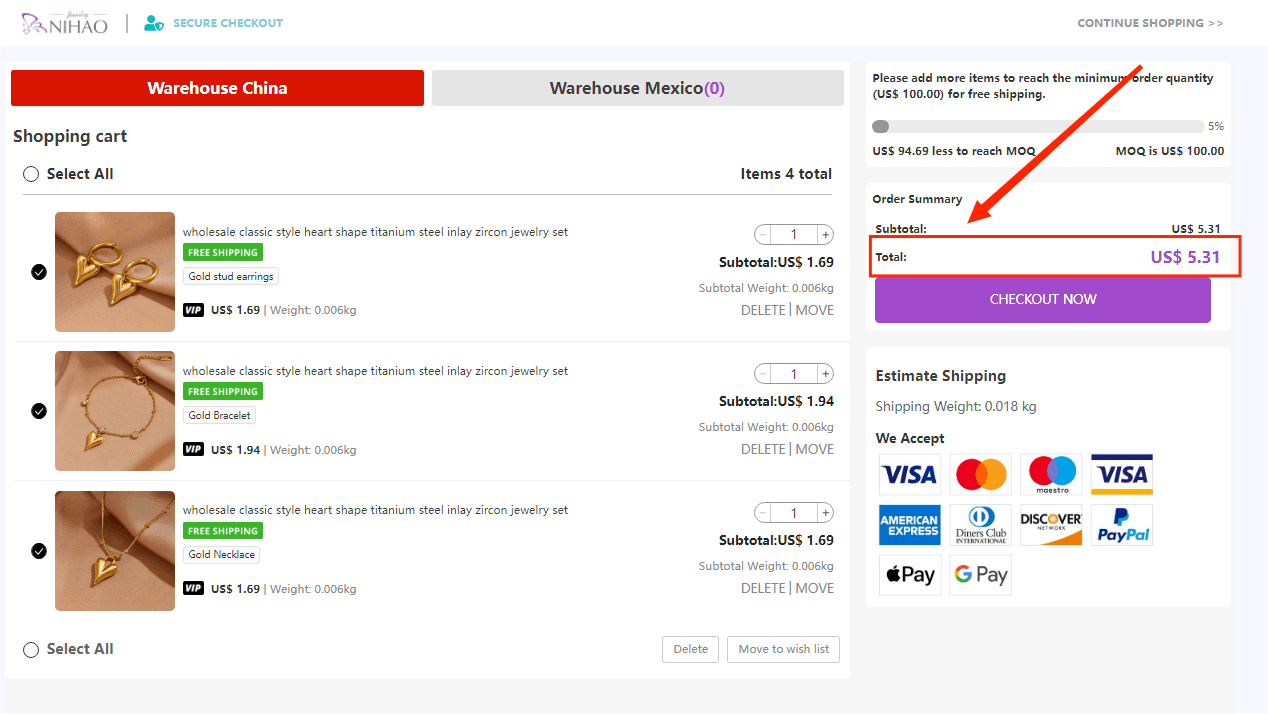
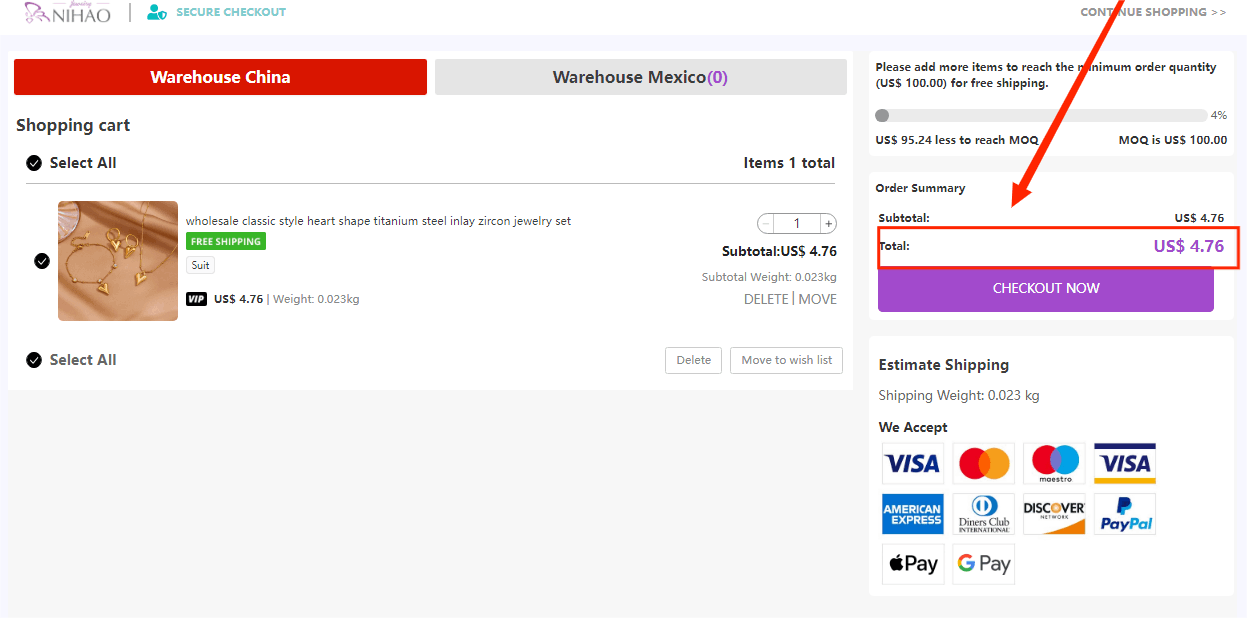
The total price of these products when purchased individually is US$5.31. Nihaojewelry sells the set with these three pieces for US$4.76. This will save you US$0.55.
This pricing strategy can help retailers shift inventory that is difficult or unaffordable to sell individually, thereby increasing sales.
Psychological Pricing
For the same piece of jewelry, an item priced at US$ 1.99 appears at first glance to be significantly cheaper than one priced at US$ 2. While the price difference between these two items is insignificant and known to the user, this odd ending price makes the price seem more attractive or affordable to the customer and can effectively influence customer behavior and trigger impulse purchases.
This approach increases the likelihood of a customer making a purchase, which can help retailers increase sales.
Loss-leader pricing
Discounting a best-selling piece of jewelry to entice customers to buy that product as well as other items.
This method can help retailers encourage shoppers to purchase multiple items in a single transaction, which can increase overall sales and also make up for the loss of the original product’s price reduction.
Anchor Pricing
The retailer lists both the discounted price and the original price to determine how much the consumer can save on the purchase. For example, at Nihaojewelry, the original price of this women’s necklace was US$ 1.01, and the sale price was US$ 0.81, saving the customers 20%.
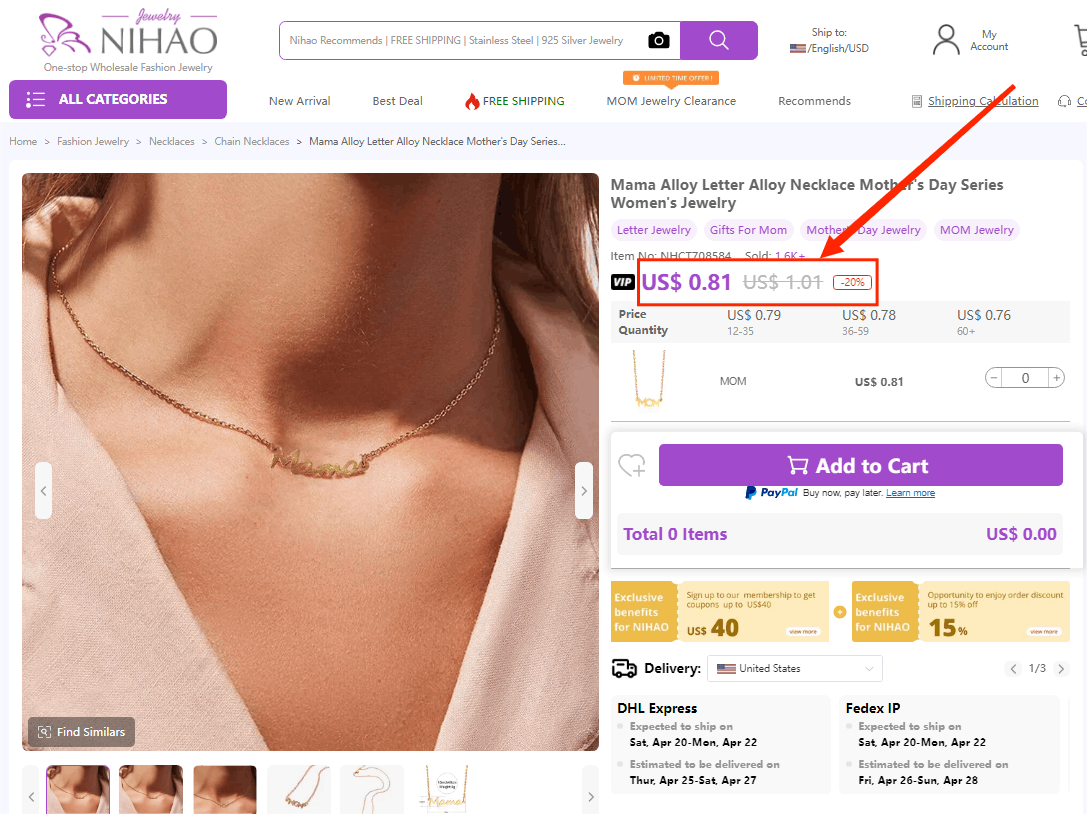
This approach influences customers to make purchases based on perceived deals, which in turn increases your sales.
Keystone Pricing
The simplest way to understand cornerstone pricing is:
Price = wholesale price x 2.
This method saves retailers time and effort and ensures adequate margins.
Discount Pricing
As we all know, shoppers are sensitive to coupons. For example, Nihaojewelry has various discounts from time to time depending on the holiday or season.
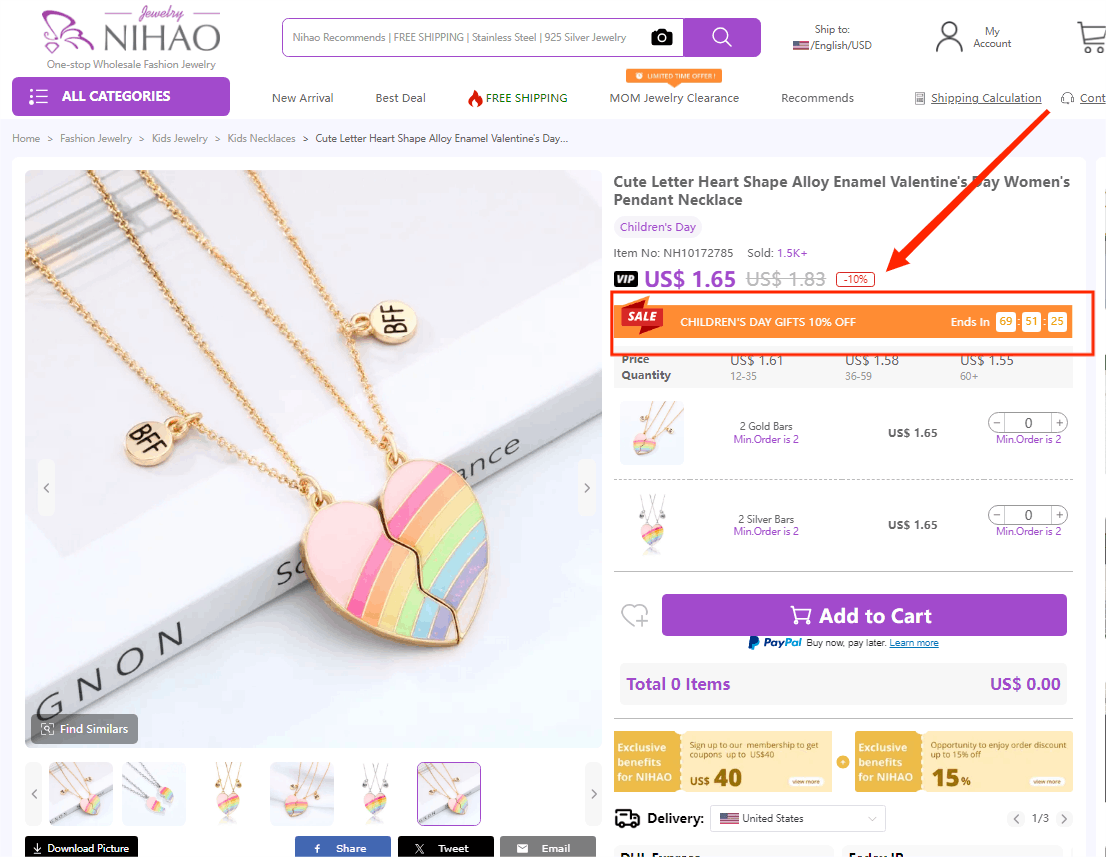
Retailers can use discount activities to attract more customers, and at the same time, they can also clear the slow-selling or out-of-season products.
Premium Pricing
With excellent customer service and a strong brand image, retailers can refer to their competitors and then raise the price of their products. With higher prices, consumers will perceive the quality of your products as better than your competitors.
This pricing strategy can help retailers increase profit margins and sales.
Channel Based Pricing
Retailers can set different prices for the same product depending on where it is sold. You can have multiple channels to sell jewelry such as physical stores, websites, and social media accounts.
Let’s also take the necklace in the second pricing strategy example: when we wholesale up to 12 pieces, the wholesale price is US$ 3.54.
With the additional shipping cost, the price on your website can be set at US$ 24.70.
The price for your physical store can be doubled to US$ 49.40 or even higher, depending on your costs, because of the extra rent, utilities, etc. that a physical store has to pay each month.
On the contrary, you can set the price at US$ 21.99 on social media, using a low price to attract more traffic and increase your brand awareness.
This approach can greatly incentivize customers to choose a specific channel.
In Conclusion
When deciding on a pricing strategy for Jewelry, retailers need to think through the key factors involved and clarify your most important financial goals.
Of all the strategies we’ve shared, no one pricing strategy is sufficient. Retailers should try and combine various pricing strategies to develop the right pricing strategy to ensure profitability.
